Welcome to the first in what will be a weekly series chronicling the histories of various characters in the DC Universe. If you’re just getting started in the New 52 and don’t know squat about what has come before, this should bring you up to speed. If you’re an old timer who has been reading these stories for years, feel free to nod along as you read. For all of you somewhere in between, here’s hoping you learn a little something too.
This week, we’re talking about the Suicide Squad.
The modern Suicide Squad debuted in the pages of Legends, DC’s first company-wide crossover after Crisis on Infinite Earths. There was an original Suicide Squad that operated in the 1960s, though it was a military group that went on dangerous missions. This Suicide Squad, officially titled Task Force X, was a group of supervillains who the government tapped into service. Some of these villains were on the Squad due to financial gain. Some were there because their prison sentences would be commuted to ‘time served’ if their mission was successful. And others were there because, if they didn’t cooperate, an explosive wristband would cripple them. Everyone had a reason to be on the team except for actually wanting to be on the team.
Amanda Waller created the Squad through sheer force of will. A tough-as-nails middle-aged African American bureaucrat, “The Wall” argued that a group of super powered individuals could do dangerous jobs of American interest that others couldn’t safety do. Waller kept the group in line with a combination of anger, tactical know-how, and swagger. During her first meeting with Captain Boomerang, a perennial Squad member and walking punchline to those who haven’t read the series, Waller let it be known who was in charge.
The makeup of the team would change with every mission. Based out of the Belle Reve Penitentiary in Louisiana, the Squad would be made up of whatever prisoner happened to be incarcerated when the mission started. However, there would be certain Squad members who stayed on for multiple missions. Among them were Captain Boomerang, Deadshot, Bronze Tiger, and Rick Flag Jr, son of a member of the 1960s Squad.
As their name implies, turnover in the Suicide Squad wasn’t just from criminals getting pardons on their time. People died in their service to their country. Blockbuster, an old Batman villain, died during the first mission. Mindboggler, a minor Firestorm villain, died thanks to Captain Boomerang’s passive aggressive revenge.
Later, the always conniving Boomerang talked Slipknot, another minor Firestorm villain, into making a run for it during a mission. It turned out that the explosives on members’ arms wasn’t an idle threat.
Some characters were more vulnerable to death than others. Sometimes, an A-list character would join for a mission or two and there was never much worry that they wouldn’t survive. When the Penguin was a Squad member during a single Russian mission, it surprised no one when he walked away clean at the end. Similarly, Poison Ivy was fine at the end of her tenure. If you were a D-list villain, you may have ended up the worse for wear when it was all said and done.
Suicide Squad missions followed a fairly common pattern. First, Waller would bring everyone together and brief them. She’d lay out the details of their next mission and assign each member a specific role. Then, the mission would begin and, after a promising start, everything would fall apart. It happened time and again.
John Ostrander and Kim Yale, the writers of Suicide Squad, kept the series interesting by focusing on the characters in the Squad. Everyone was well thought out and fully realized. Captain Boomerang, even though he had a very silly costume, had a drive and an ambition that made him unique. They also kept things interesting by playing up the espionage aspects of the book. Every country was trying to one-up the other ones and even different departments in the United States government didn’t get along. Seeing who was screwing over who and how they were doing it made for compelling reading.
It wasn’t just the Squad members that readers were getting stories about. There was also a whole support staff who did all of the prep work before missions and the clean up afterwards. Belle Reve had a chaplain who also was the Squad’s psychiatrist. There were helicopter pilots and medical staff. There was also Oracle, the Squad’s research and information specialist.
Modern readers will know that Oracle was really Barbara Gordon, recently paralyzed by a bullet shot by the Joker. However, it was in the pages of Suicide Squad that Oracle first appeared. Her identity was a mystery at first, though Waller eventually tracked her down. It was with the Squad that Barbara first began to contend with her feelings of inadequacy and social isolation after being forced into a wheelchair. Later writers would expand upon the Oracle persona until Barbara became the information broker of the Justice League and the entire DC Universe.
Eventually, the members of the Squad would stop going on missions in costume. For its last few years, the Suicide Squad focused on wholly on espionage, which required a bit more subtly and less bright blue costumes with boomerangs on them. They split off from the American government and did missions for whomever paid them.
Though the Suicide Squad’s series would eventually be canceled, its legacy lived on in other titles. They’d pop up here and there, completing missions that no one else would attempt. For example, Superboy joined their ranks for a single mission when they were after a common target.
After a few appearances like this one, the Squad would get another shot at a solo book. Written by Keith Giffen, this new book would build as much on past Justice League International stories as it did on past Suicide Squad stories. The biggest change this series made was having Sgt. Rock be the leader of the group instead of Amanda Waller. The tone of the series was a bit more light-hearted than the original and it only lasted 12 issues.
This series had very little to do with black ops and betrayal, two things that made the original Suicide Squad so much fun to read. It’s not awful by any means, but it doesn’t live up to what came before.
Amanda Waller continued to show up as an occasional supporting character. She’d tend to appear whenever the United States government was shown to be engaged in less than ideal actions. Waller grudgingly worked with Lex Luthor when he was the President. When the espionage group Checkmate got a new series, she became a full member of that organization.
With Waller a part of Checkmate, the Squad wasn’t far behind. They soon appeared in that series and got a spin-off miniseries right as Checkmate was being canceled. Again written by John Ostrander, this series was heavily tied in with both the original Suicide Squad and the modern Checkmate.
With six of the thirteen members of the group dying during their mission, this series would truly live up to the Suicide Squad title.
The many deaths in the Suicide Squad would come back to haunt Waller during Blackest Night. About a dozen deceased Squad members were resurrected and they proceeded to hunt down their past colleagues in both the Squad and the Secret Six. Waller was able to put down the undead, but it was a close call.
So, where is the Suicide Squad in the New 52? Well, they have their own series once again, which makes me happy. However, the focus of the book now seems to be much more on gore and blood than subtle black ops and back room maneuvers. I’ll be sticking with this title for a while in the hope that it will turn into what I want it to, but I’m not exactly holding my breath.
For those of you interesting in reading high quality Squad stories, your best bet is to track down the 66 issues of the original series. The politics may be a bit out of date, but the stories are solid. DC put out a trade with the first eight issues of the 1980s series so go look for that. A follow-up volume of the next few issues was solicited for October but it never hit store shelves. You’ll probably have to find this series in single issue form.
Jeff Reid is a librarian who has finally found a good use for his many longboxes. In case it didn’t come through in the above article, he really loves the Suicide Squad, especially those stories written by John Ostrander and Kim Yale. Feel free to follow his ramblings on Twitter where he’s much less likely to speak of himself in the third person.
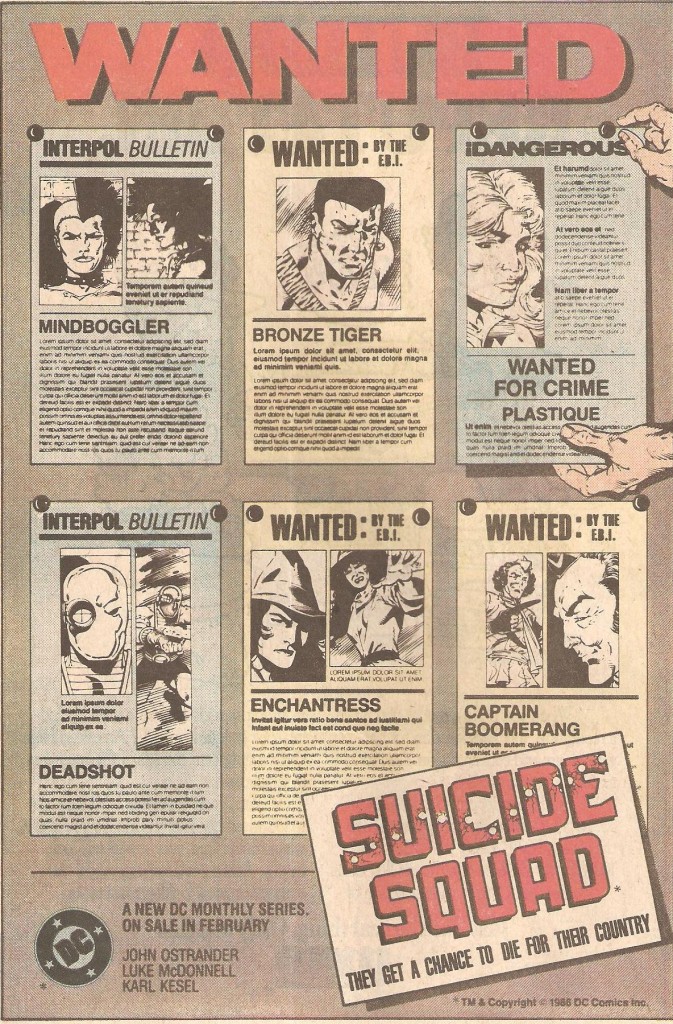

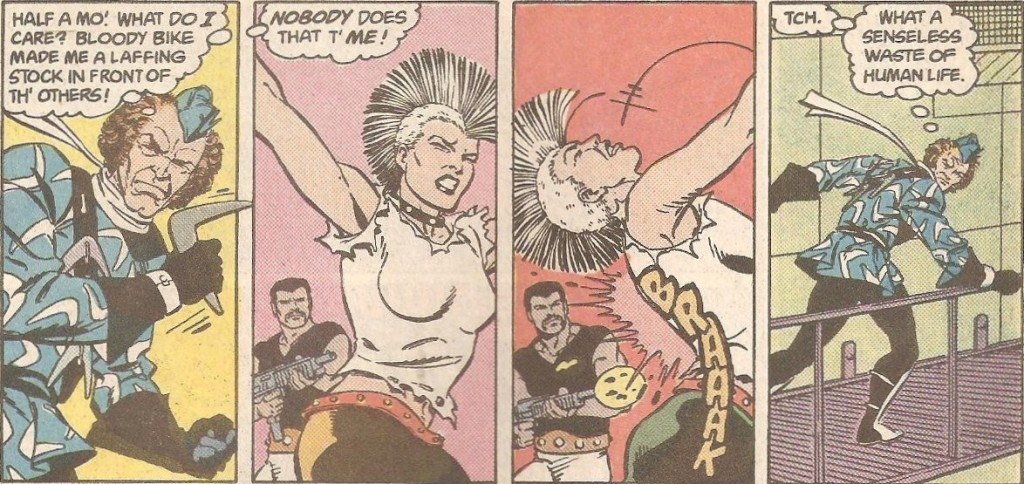
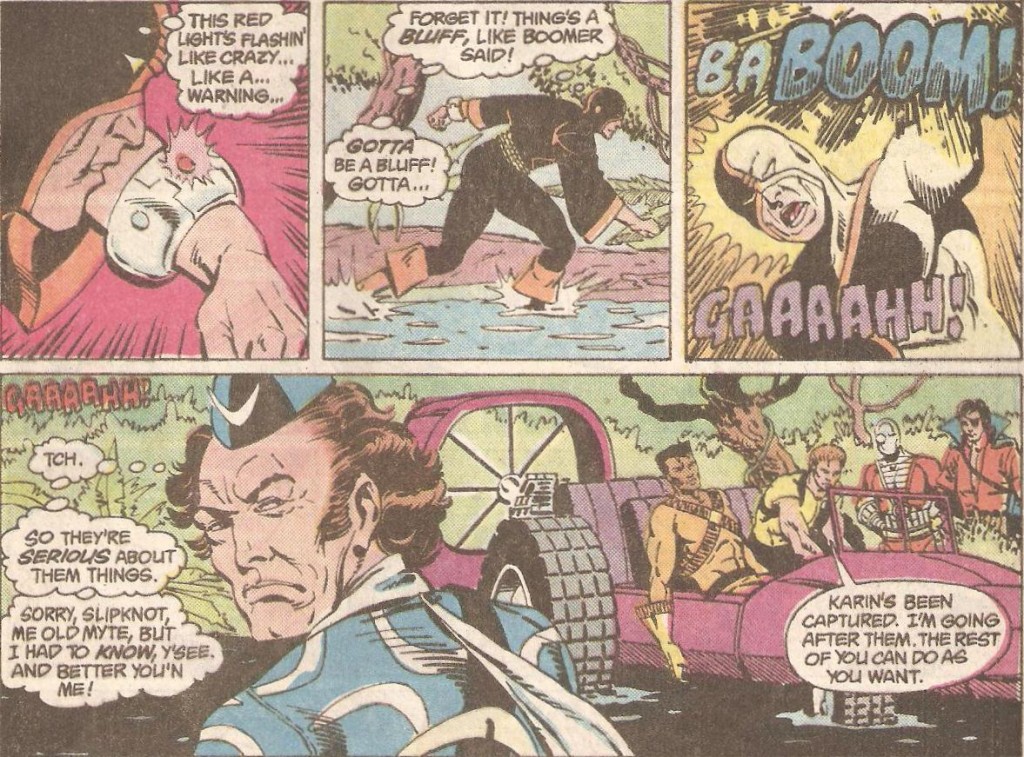
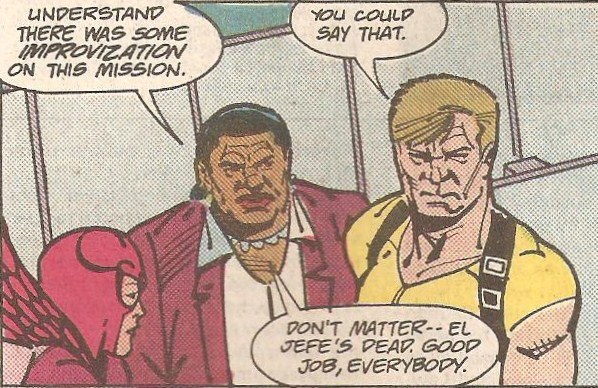

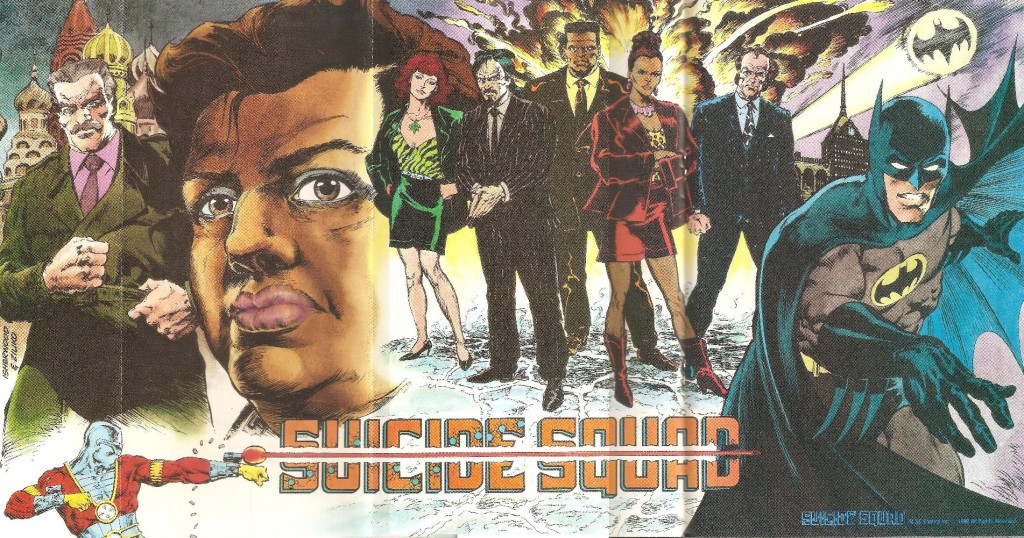
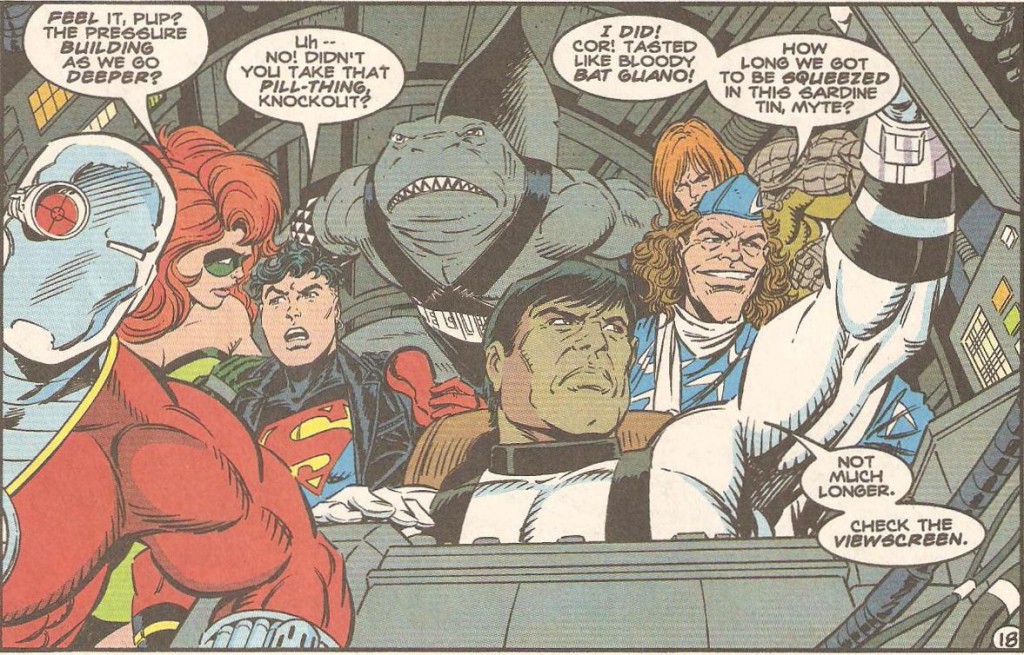
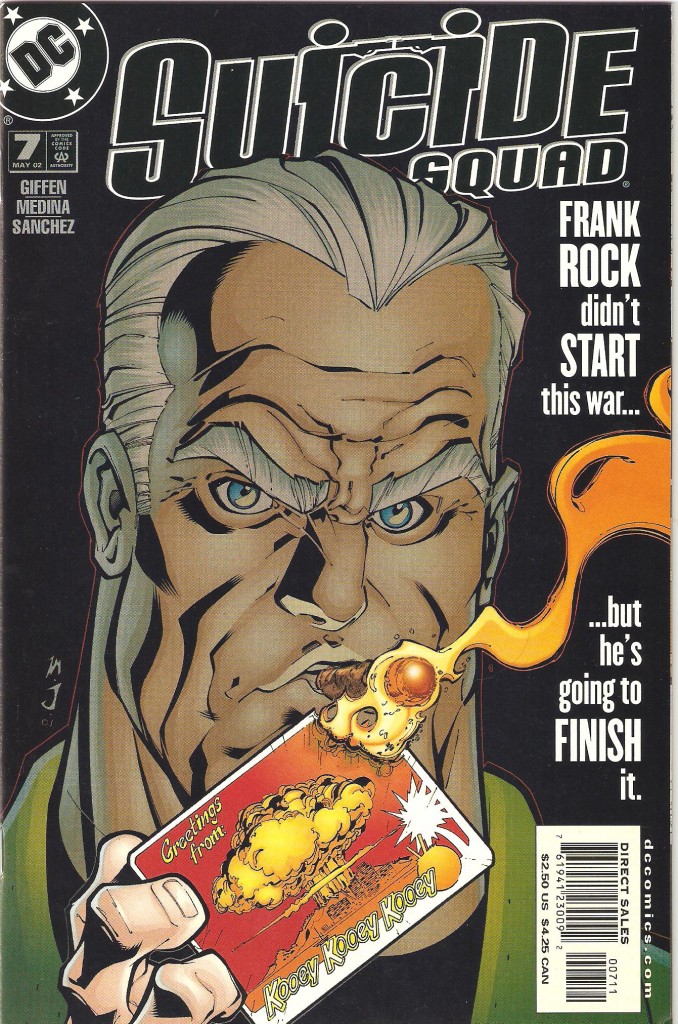
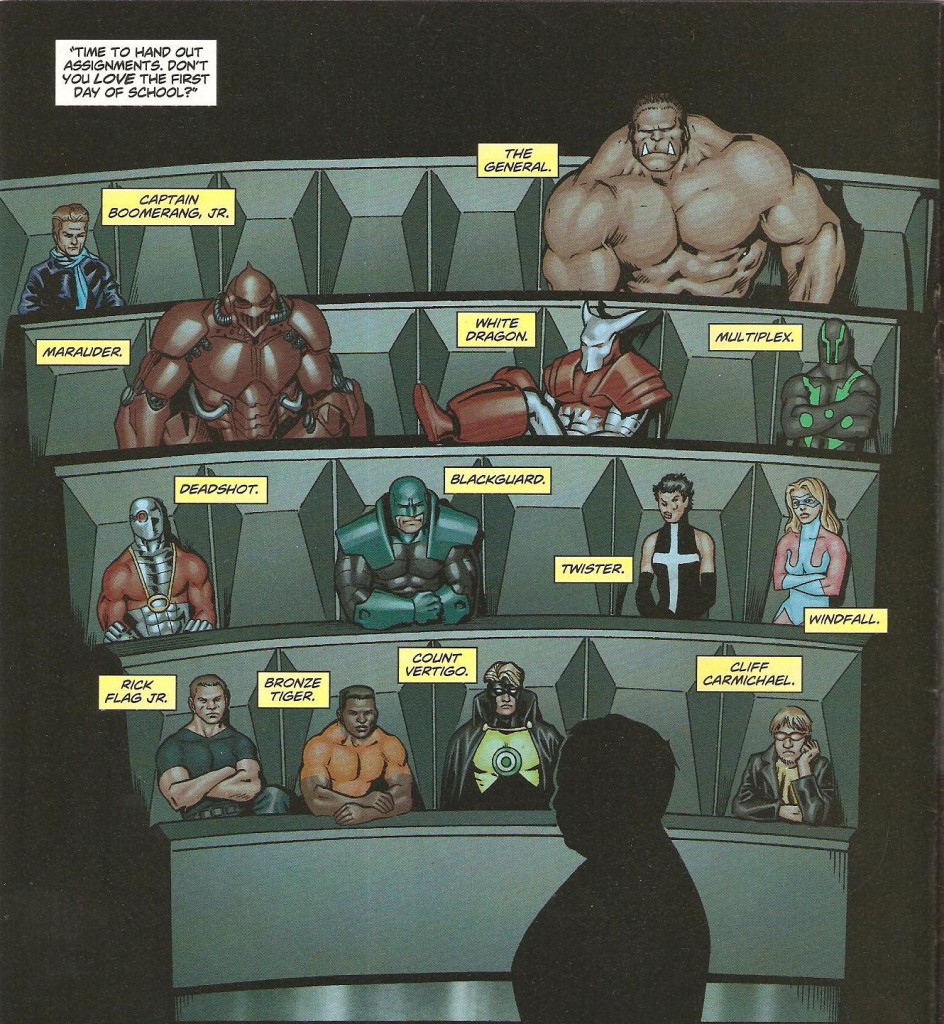
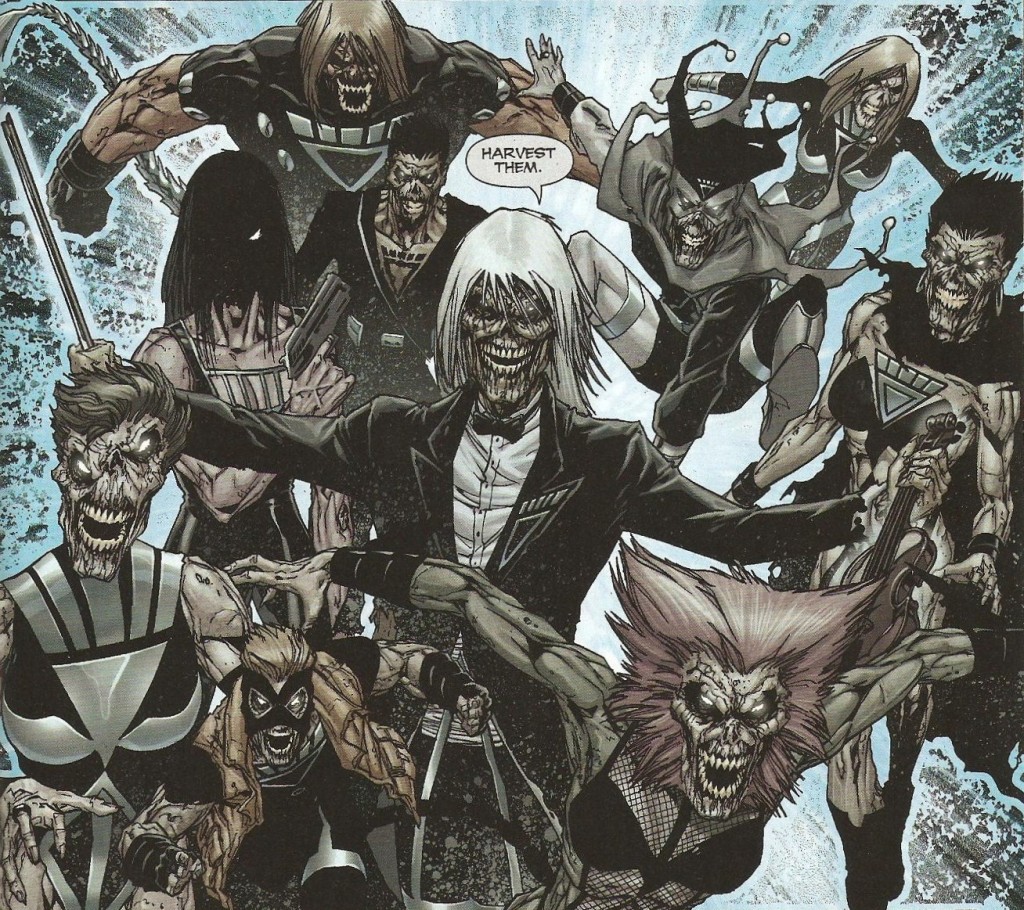



Nice feature. 🙂
Still need to check out the old series, but the New 52 SS is just…bad. I have zero faith in Adam Glass to turn things around.
YES!! The enigmatic Jeff Reid is a staffer!! Really looking forward to this column.
Dude! Its Jeff Reid!!
Really excited about this new weekly feature! The original Suicide Squad series is one of my all time favorite comics. Definitely a must read for any DC fan.
I feel educated…great article!
Great article JeffR… even though I still have a hard time trusting it. This is some sort of underhanded scheme isn’t it!
Never trust a Jeff!
this was great, keep up the good work!
Nicely done, Jeff!
And you used the pull-out POSTER from my personal favorite era of Suicide Squad, the “de-costumed” espionage era. Fun stuff!
That poster was the only thing I could find that showed the entire Squad and that didn’t involve them sitting on a couch. Plus, everyone loves fold-out posters!
What was Plastique wanted for?
According to that poster, she was wanted for “crime.” That is a bit vague. I’m assuming the unmentioned crimes were related to her being a French-Canadian terrorist who went up against Captain Atom more often than not.
I would have assumed it would have been “Blowing shit up without a permit”
She also went up against Firestorm a couple of times.
Leapin’ Librarians, it’s Jeff Reid!!! So excited to see you having a recurring column on iFanboy. Been a long time coming.
I really think I’m gonna enjoy these columns, I knew the very, very basics of the Suicide Squad but this has been a worth while read. Roll on the next history lesson.
The original series was nothing short of excellent. Very well worth going through the back issue bins for.
As for the newest series? The first issue was bad, the second was better and the third was pretty uneven (more on the bad side than good, I’d say). And still not worth losing Secret Six for. At the very least, Ostrander should have been brought back. He just gets it.
“Ostrander should have been brought back. He just gets it.”
Not according to Glass.
Yeah, well let’s just say I’ll take his opinion a bit more seriously when:
a) his Suicide Squad is good for three consecutive issues (it’s been bad, better then okay-ish in that order – IMO, of course)
and b) his run matches Ostrander’s in terms of number of issues.
Nothing against Glass. There’s some good stuff in the book. But it’s not nearly as good as some of what has come before. Again, my opinion of course.
This is a cool idea for a feature. I look forward to more.
Great to see Jeff’s excellent column posted over here at iFanboy. I’ve been loving these feature.
Jeff, does this mean you’ve graduated past “cub reporter” status? 😉
If anyone hasn’t seen it, there is a good Suicide Squad episode of the Justice League Unlimited cartoon written by Darwin Cooke.
Great article by the way. Love the scans.
First let me say that it is fantastic that Jeff Reid, the unsung hero of ifanboy, is now a contributor for the site.
Suicide Squad is a series I have always wanted to get into. But with having a hard time finding back issues, and DC only releasing the first trade for the first time, it was too hard to get into. I hope DC releases the series in trades more frequently to enjoy what could be a fantastic series.
Was Bane recently a member of the squad or was that another team?
Really good article, i enjoy reading some comic history, keep em coming.
Secret Six.
Ah, Secret Six…the comic that made you feel slightly dirty for enjoying is so much!
Love that book!
i’ll always miss the original but so far this new series has acceded my expectations.
http://www.suicidesquadtaskforcex.blogspot.com/